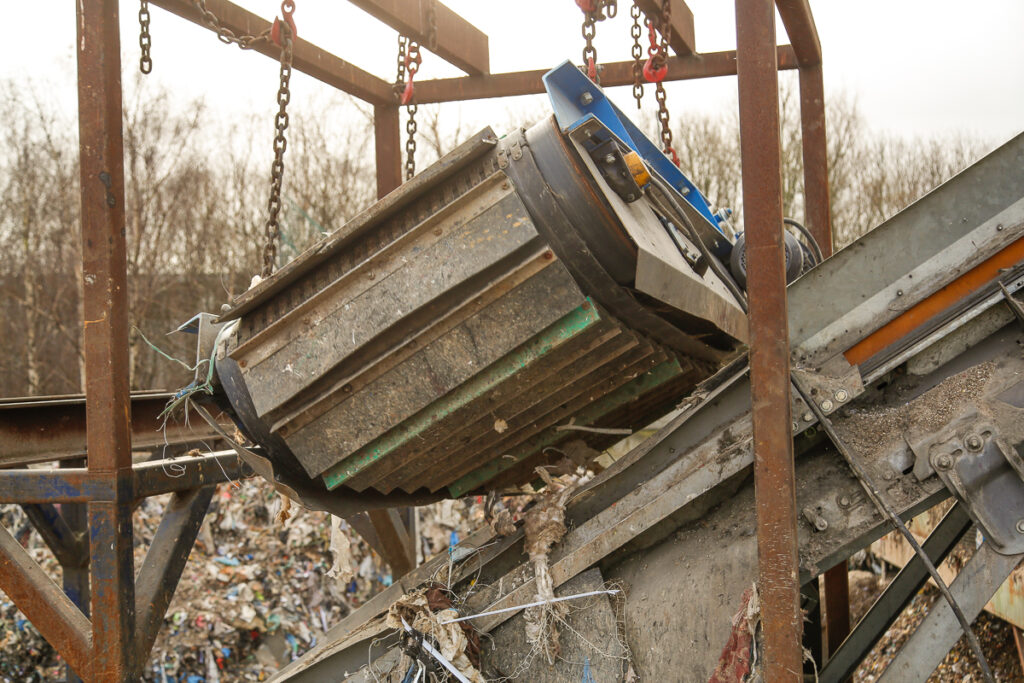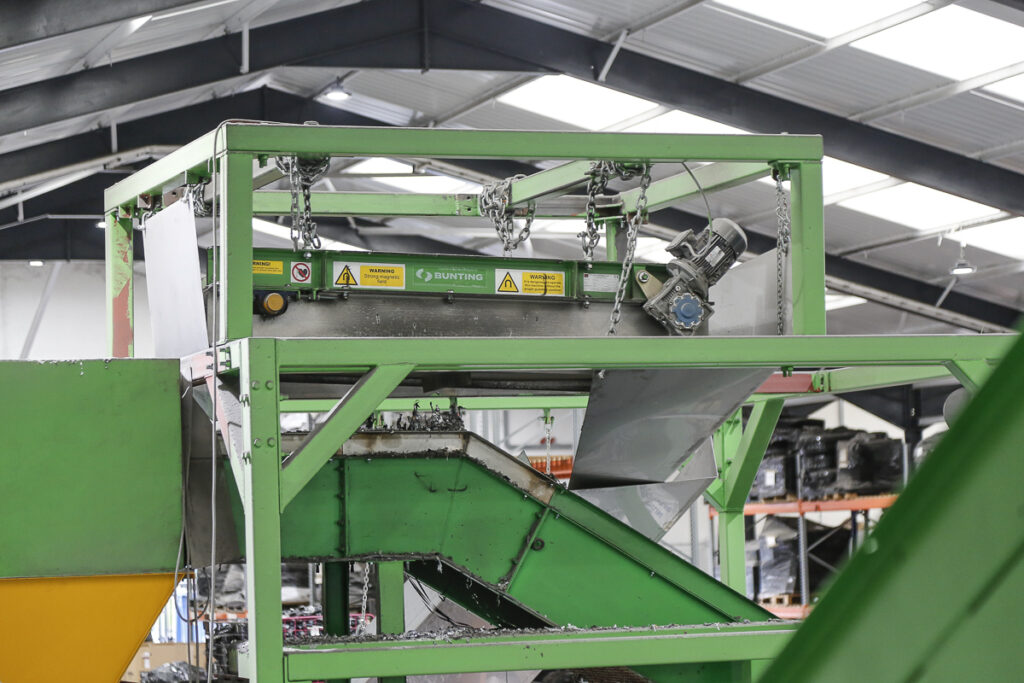Magnetic Metal Free Areas under Overband Magnets
By Paul Fears | 27 August 2024
A common question asked when a client is installing an Overband Magnet or Suspension Magnet is whether the conveyor idlers, frame and housing could become magnetically induced.
When installed suspended above a conveyor, the Overband Magnet and Suspension Magnet work by projecting a magnetic field down and through material transported on a conveyor. This magnetic field attracts tramp metal or recycled metal such as steel cans, pulling the metal out of the burden and up onto the face of the magnet. With Suspension Magnets the magnetic metal is held on the face and on Overband Magnets the lifted metal is moved away from the catchment area and into a collection area by a continually moving cleaning belt.

There is a wide range of Overband Magnets and Suspension Magnets that produce different magnetic field shapes, depths and strengths. Larger magnets tend to generate stronger and deeper fields.
- Technical product details – Overband Magnets
- Technical product details – Suspension Magnets
Steel Becomes a Magnet
Steel is not magnetic in its natural state, but it can be turned magnetic. When a nonmagnetic piece of steel is placed in a magnetic field, the atoms rearrange themselves in a manner that changes the nonmagnetic steel into a temporary permanent magnet.
Subsequently, any steel structure underneath an Overband or Suspension Magnet and within the magnetic field has the potential to turn magnetic.
But what effect does this have?
Magnetically Induced Steel Idlers, Frame and Housing
In operation, material is carried on a rubber belt running on a series of idlers. These idlers may be made from steel and, therefore, would become magnetic when placed in the magnetic field of an Overband Magnet or Suspension Magnet. When an item of tramp metal moves into the magnetic field of the separator, it will be attracted to the magnet positioned above and also to the induced magnetic field of the steel roller. Subsequently, the two magnetic forces fight against each other to attract the metal, with the strongest force ultimately winning. Such competition for the tramp metal may result in the metal being missed and passing out of the magnetic field without being separated.

When the frame supporting the idlers is steel, this also becomes magnetically induced. Although usually located away from the conveyed product, tramp metal separated out of the burden by the Overband or Suspension Magnet may get attracted to, and then magnetically held, onto the frame.
The same applies to any steel housing, side skirts and chutes around or near the conveyor. This becomes magnetically induced, attracting and holding any free ferrous metal.
In certain applications, such as when handling wood waste and biomass, the magnetically-induced conveyor frame and housing attract and hold nails, screws and other smaller tramp metal, which can be problematic. Also, tramp metal that has been separated and discharged into a magnetically induced chute may become attracted to the side and, over time, causes blockages.
Reducing the Effect of Magnetic Induction
The solution to the problem is to reduce and potentially eliminate magnetic metal from the magnetic field. This includes:
- Replacing steel idlers with non-magnetic idlers (plastic or stainless steel);
- Cutting out the steel frame and replacing with stainless steel;
- Changing the steel frame panels from steel to stainless steel;
Although this incurs unwanted cost, undertaking such changes prevents the unwanted build-up of magnetically attracted materials on the frame and housing, as well as ensuring the performance of the Overband or Suspension Magnet is not compromised.